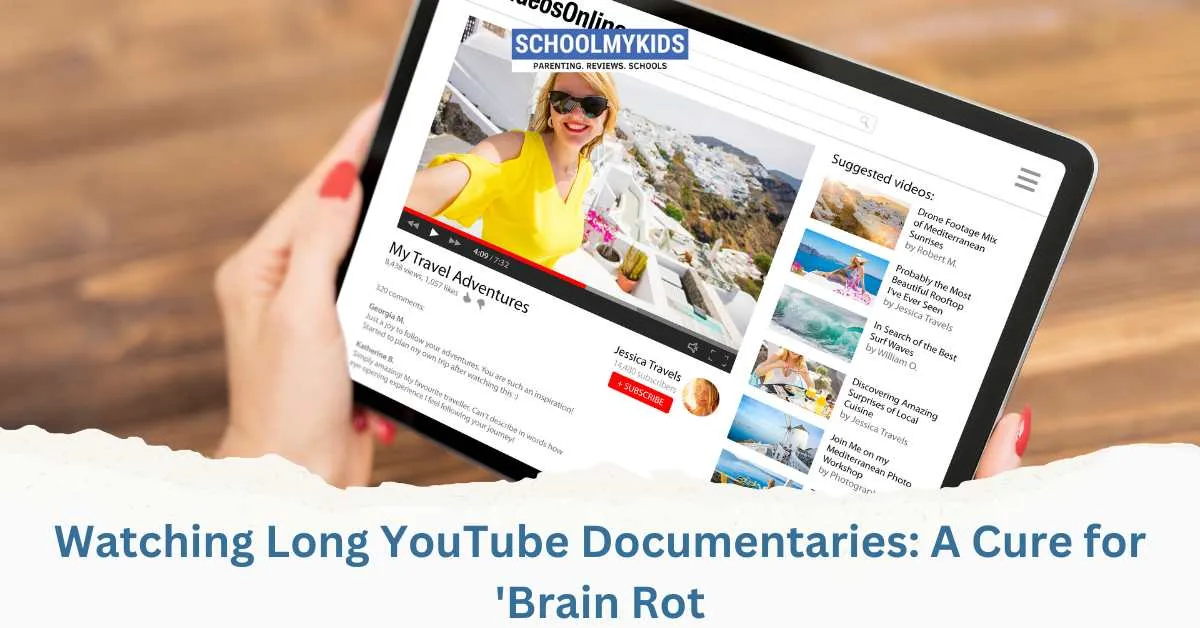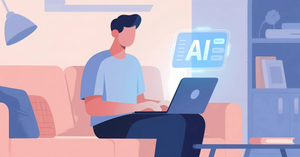In recent years, concerns surrounding excessive screen time, social media overload, and the onslaught of trivial online content have coalesced into a term frequently dubbed “brain rot.” It describes that fuzzy, exhausted mental state many of us experience when we spend hours scrolling through fragmented information on our phones or computers, rarely coming up for air. This phenomenon has become so pervasive that “brain rot” (or closely related phrases like “doomscrolling”) has been touted as a defining term for an entire era—some even calling it the “word of the year” in popular culture discussions.
But is there a way to break out of the cycle of mindless scrolling and restore a sense of curiosity and depth to our online lives? One potential antidote lies in something quite accessible: long-form YouTube documentaries. By deliberately swapping out snappy, 15-second reels for extended documentaries, viewers can reclaim their attention spans, immerse themselves in well-researched topics, and offset the negative impact of shallow online browsing. Below, we explore the rise of “brain rot,” why short content can be harmful to our cognitive health, and how watching long YouTube documentaries offers a surprisingly effective countermeasure. We’ll also discuss additional strategies for revitalizing our brains and show how the shift to more meaningful engagement can help us thrive in a noisy digital world.
1. Understanding the Rise of “Brain Rot”
Before diving into how long YouTube documentaries can help, it’s essential to understand the problem. “Brain rot” is an informal but evocative term that encapsulates the feeling of mental fatigue and superficial knowledge caused by too many hours of random scrolling. Rather than ingesting cohesive information, we consume a constant trickle of headlines, soundbites, memes, and short clips—each one ephemeral, easily forgotten, and often lacking context.
These microbursts of content can trigger heightened anxiety and distractibility. A 2019 study published in the journal Computers in Human Behavior found that fragmented attention spans, due partly to overconsumption of social media and bite-sized media, can contribute to higher stress levels and negatively impact learning retention and critical thinking skills. The aggregated effect of this “snackable” media is that we feel overstimulated yet underinformed—hence, the “brain rot.”
When a concept like “brain rot” becomes a word of the year or a pop-culture staple, it signals both a widespread experience and a public call for solutions. More people are becoming aware of their own frustration with superficial online content, fueling interest in practical strategies to protect and revitalize their cognition.
2. Pitfalls of Short-Form Content
Short-form media is not inherently bad. Platforms like TikTok, Instagram Reels, and YouTube Shorts offer creative expression and quick entertainment. They can provide valuable bits of information, comedic relief, or social connection. The problem arises when short snippets dominate our entire media diet.
- Fragmented Learning: With short-form content, the learning process is typically incomplete. Topics are introduced in such limited detail that viewers rarely gain thorough understanding or develop deeper curiosity.
- Constant Distraction: Scrolling through algorithms designed to maximize engagement can lead to an endless loop of superficial content. Notifications, auto-play features, and targeted ads keep our attention in a reactive state.
- Anxiety and Stress: Overexposure to rapid, high-intensity content can overstimulate our brains, trigger stress responses, and leave us feeling more anxious rather than informed or relaxed 22.
- Reduced Critical Thinking: Constantly absorbing fast-paced media discourages deep analysis. As critical thinking takes time and mental energy, we rarely get the chance to reflect on or question the information presented in 15-second clips.
3. Why Long-Form YouTube Documentaries Work
In contrast, long-form YouTube documentaries provide a more immersive and enriching viewing experience. Channels like Timeline – World History Documentaries, National Geographic, VICE, or independent documentary makers often produce hour-long or multi-episode explorations of historical events, scientific phenomena, environmental challenges, and cultural narratives. Here’s why they’re so powerful in combating “brain rot”:
- Depth of Knowledge: Documentaries typically involve meticulous research, expert interviews, and footage that conveys a story or concept holistically. When viewers invest time in such content, they gain deeper insights and a more nuanced understanding of a subject.
- Sustained Attention: Watching a 60-minute documentary demands sustained concentration, an exercise akin to reading a long chapter of a book. This trains the brain to focus for more extended periods, improving overall attention span.
- Contextual Learning: Documentaries provide context by showcasing historical timelines, societal impacts, and multifaceted perspectives. This holistic approach promotes critical thinking and helps viewers connect the dots between scattered pieces of information.
- Inspiration and Curiosity: Long-form content is more likely to spark curiosity. After watching an in-depth piece, viewers may want to read more, delve into related topics, or even take online courses related to the subject matter.
- Reduced Reliance on Clickbait: Because the emphasis is on storytelling and knowledge transfer rather than quick views, long-form documentary channels are less reliant on sensationalism and clickbait. This creates a more mindful viewing environment.
4. Techniques for Incorporating Documentaries into Daily Life
Replacing mindless scrolling with documentaries isn’t always straightforward. It requires conscious effort, consistent habits, and sometimes a change in how we view leisure time. Here are several techniques and tips:
- Scheduled Viewing Sessions: Instead of letting YouTube’s algorithm pick your content, decide on a set time—say an hour every evening—to watch a documentary on a specific topic. This can transform passive browsing into purposeful learning.
- Create Themed Playlists: Use YouTube’s “Watch Later” or create playlists organized by themes—science, history, art, culture. Whenever you stumble upon a potentially interesting documentary, add it to one of these playlists. This helps you resist the temptation of short clips in favor of a more in-depth session later.
- “Documentary Night” with Friends or Family: Make it a social activity. Invite friends or family members to gather (virtually or in person) for a weekly documentary screening. Discuss key takeaways afterward. Social reinforcement can make the habit more enjoyable and keep you accountable.
- Use Content Curation Platforms: Websites and apps that aggregate long-form content (e.g., Curiosity Stream or Nebula) can assist in discovering high-quality documentaries. Some of these platforms require a subscription, but they’re often affordable and curated by experts in various fields.
- Avoid Multitasking: When watching a documentary, silence your phone notifications, close irrelevant browser tabs, and focus on the screen as if you were in a theater. This “single-tasking” approach is vital for deep engagement.
5. Beyond Documentaries: Additional Strategies to Reverse “Brain Rot”
Although watching long YouTube documentaries is a powerful step toward beating “brain rot,” it’s just one part of a broader strategy. Incorporating mindful practices and cultivating healthier digital habits can further enhance cognitive resilience.
- Digital Detox and Mindful Tech Use
- Reading Physical BooksReading requires a sustained attention span and invites deeper engagement with complex ideas. Regularly reading in tandem with documentary watching can significantly improve comprehension and retention.
- Engaging in Discussion and ReflectionAfter finishing a documentary, take a few minutes to reflect or journal about the key insights. If possible, discuss the content with friends or online forums. According to a 2018 study by the American Psychological Association, reflection and group discussions enhance learning and retain information more effectively .
- Practicing Mindfulness and MeditationMeditation exercises can counterbalance the mental fatigue from digital overload by training the mind to remain in the present moment. Research has shown that mindfulness practices can improve focus, reduce stress, and even boost creativity 44.
- Seeking Offline HobbiesImmersing yourself in creative or physical pursuits—like painting, cooking, hiking, or playing a musical instrument—provides the brain with a break from screen-based stimulation. This can help reset neural pathways and lower stress levels.
6. Success Stories and Real-World Benefits
Real-life anecdotes underscore the positive impact of replacing mindless scrolling with more substantive content. For instance, online communities on Reddit dedicated to “long-form watch parties” often share success stories of improved focus, knowledge gains, and decreased stress. One popular thread recounted how a high-school student struggling with concentration found new academic inspiration after watching historical documentaries. By channeling screen time toward educational videos, the student later reported higher grades and a renewed appetite for reading.
Professionals working in creative fields often cite documentaries as a spark for new ideas and solutions. Filmmakers, designers, and writers note that the in-depth storytelling of documentaries triggers fresh perspectives and helps them weave complex narratives into their own work. Even entrepreneurs have reported stumbling upon market insights or cross-cultural trends through documentaries about economic history or global innovations.
7. Critiques and Considerations
Despite the many benefits, watching documentaries is not a magic solution. Some critics note that YouTube’s algorithm might still push viewers toward sensationalist content or incomplete narratives, even within the realm of documentaries. It is crucial, therefore, for viewers to develop a critical eye, verifying documentary sources, checking production credentials, and remaining aware of potential biases.
Additionally, long-form videos require uninterrupted blocks of time—an increasingly scarce resource for busy professionals, parents, or students. This is where strategic planning and habit formation become key. Scheduling documentaries in advance or integrating them into pre-existing routines (e.g., watching 20 minutes per day instead of bingeing on the weekend) can make the practice more sustainable.
8. Conclusion: Charting a Path Forward
“Brain rot” may be on its way to becoming a buzzword of the digital age, but it also signals a collective awareness of our overtaxed attention spans and the shallowness of fragmented media consumption. By acknowledging this challenge and seeking constructive alternatives, we can redefine our relationship with online platforms.
Long YouTube documentaries—with their depth, context, and storytelling—offer a refreshing departure from the relentless, ephemeral content of short-form videos and social media feeds. They encourage us to slow down, expand our knowledge, and exercise our critical faculties. Alongside other strategies—like digital detoxes, scheduled media use, mindfulness, and offline hobbies—these documentaries can form part of a well-rounded solution to restore balance to our mental lives.
No single change will fully eliminate “brain rot.” However, shifting our digital habits toward more substantive, research-driven content can help us reclaim our focus, enrich our minds, and spark genuine curiosity in the world around us. In doing so, we may find that technology, far from being an enemy to our cognitive health, can be harnessed as a powerful tool for lifelong learning, connection, and creativity.









Be the first one to comment on this story.